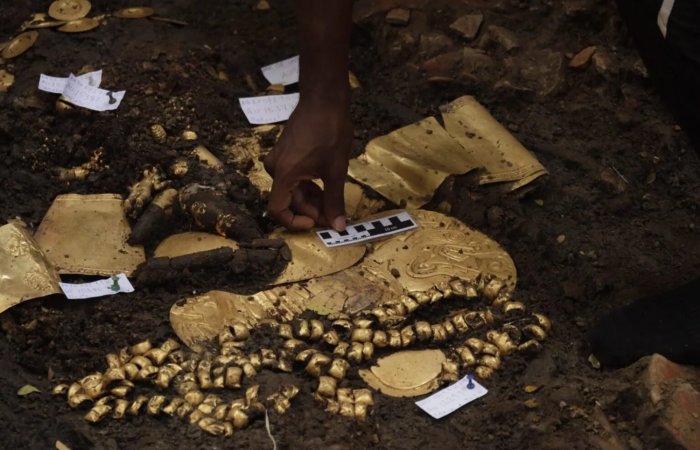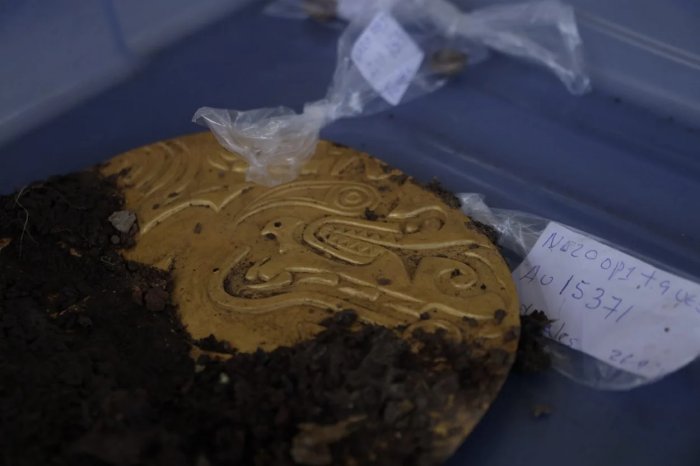Conny Waters – Ancientpages.com – The discovery of the mysterious golden lords of Panama opened a new chapter in the world of archaeology. Some years ago, numerous artifacts of gold and precious stones, indicating the existence of a previously unknown civilization, were discovered in the town of El Caño in Panama. At the time, the amazing find was considered one of the most significant discoveries of the last century.
Credit: Ministry of Culture of Panama
Now, while excavating in the archaeological park of El Caño, district of Natá, province of Coclé, archaeologists have unearthed an amazing tomb belonging to a Coclé Lord (750-800 A.D.).
Linette Montenegro, the National Director of Heritage at the Ministry of Culture (MiCultura), announced in a press statement that they discovered more than ceramic artifacts. The researchers also unearthed pieces of gold, which were part of the burial customs. These findings are not just economically valuable but hold immeasurable historical and cultural significance as well.
Credit: Ministry of Culture of Panama
The El Caño treasure collection includes five pectorals, two belts of round gold beads, four bracelets, and two human figure-shaped earrings – one male and one female. There is also an earring shaped like a double crocodile, a necklace with small round beads, and five earrings crafted from sperm whale teeth adorned with gold covers. The collection is further enriched by a series of circular gold plates, two bells, bracelets, and skirts constructed from dog teeth. Lastly, it also includes an assortment of bone flutes.
Credit: Ministry of Culture of Panama
Dr. Mayo explained that the tomb of the great Coclé Lord also contained the remains of people who died to accompany him to the afterlife.
Credit: Ministry of Culture of Panama
The burial excavation is still ongoing, so scientists can not yet determine the exact number of people buried with him. However, one thing is certain – the individual was laid to rest face down, a typical burial practice in this culture.
Credit: Ministry of Culture of Panama
Sitio El Caño, a necropolis or “city of the dead,” was constructed around 700 AD and deserted by 1000 AD. This site is more than just renowned monoliths; it also housed a cemetery and a ceremonial area featuring wooden structures.
See also: More Archaeology News
The significance of this discovery lies in its unique burial method known as “multiple and simultaneous burials.” As explained by Dr. Mayo, this term refers to the practice of burying between 8 and 32 individuals together in the same grave. These were high-status individuals laid to rest alongside others who had been sacrificed beforehand to accompany them in death.
Written by Conny Waters – AncientPages.com Staff Writer






